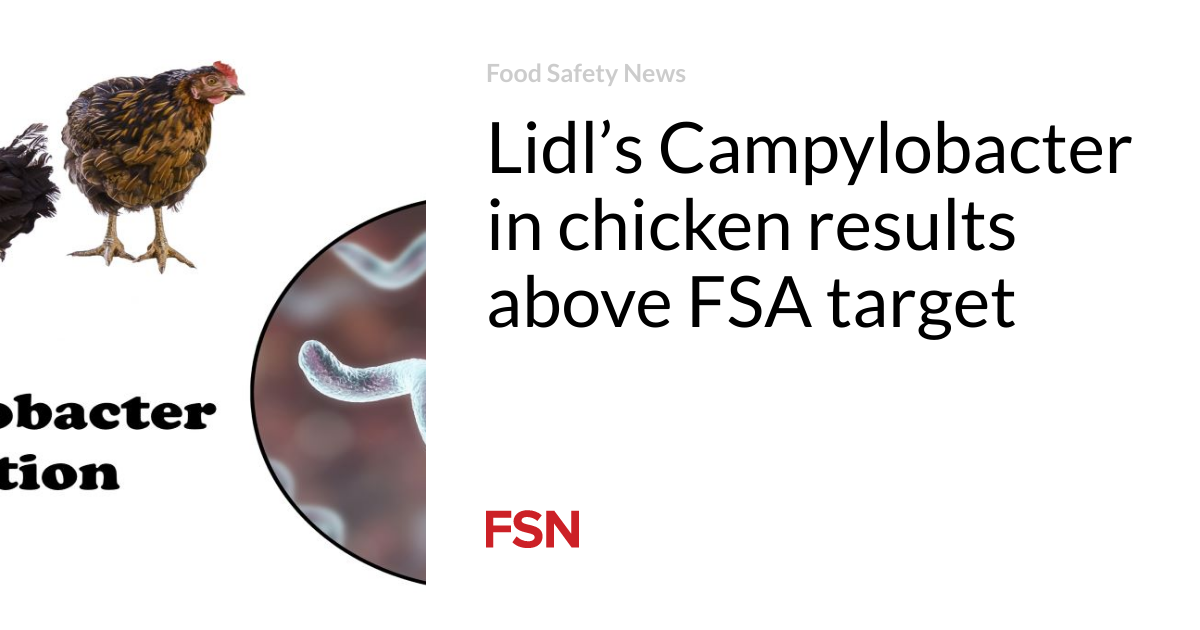Lidl has reported Campylobacter in chicken levels above the FSA’s target for the second quarter of 2022.
The supermarket chain recorded 8 percent of birds in the highest category which is up from 2 percent in the previous quarter and 6 percent in the period before that.
The Food Standards Agency (FSA) maximum level is 7 percent of birds with more than 1,000 colony forming units per gram (CFU/g) of Campylobacter.
Data from all nine retailers covers April to June 2022 on high findings of Campylobacter in fresh, shop-bought, UK-produced chickens.
Results at Lidl and Asda went up while Sainsbury’s, Marks and Spencer, Morrisons, Waitrose and Aldi recorded lower levels of contamination compared to the previous quarter. Figures for Tesco and Co-op stayed the same.
Asda informed that 2.4 percent tested positive for the highest level of contamination in the latest quarter compared to 1 percent in the previous three months.
Campylobacter is the most common cause of bacterial food poisoning in the UK and the dose needed to make people sick can be as low as a few hundred cells.
Lower or stable results
Sainsbury’s Campylobacter results for the second quarter of 2022 showed that 3 percent of chickens had levels about 1,000 cfu/g compared to 5 percent in the past quarter.
For Marks and Spencer, 1 percent were in the maximum category in April, 4 percent in May and 3 percent in June from 376 chickens sampled.
In January 2022, 4 percent of chickens were above 1,000 CFU/g, 3 percent in February and 10 percent in March from the same amount of poultry tested.
For Tesco, 3 percent of 298 samples were above 1,000 CFU/g in the second quarter of 2022, which was the same as the previous three months.
Aldi revealed 3.3 percent of chickens sampled were in the above 1,000 CFU/g category compared to 4.2 percent in the previous quarter.
Morrisons had 1.6 percent of chickens at the top contaminated level from 101 birds tested compared to nearly 6 percent from the same number of samples in the first quarter of 2022.
Waitrose and Partners had no chickens testing positive for Campylobacter at levels above 1,000 CFU/g compared to 1 percent in the previous quarter.
Co-op results for the third quarter running showed no chickens were contaminated at levels greater than 1,000 CFU/g.
(To sign up for a free subscription to Food Safety News, click here.)

